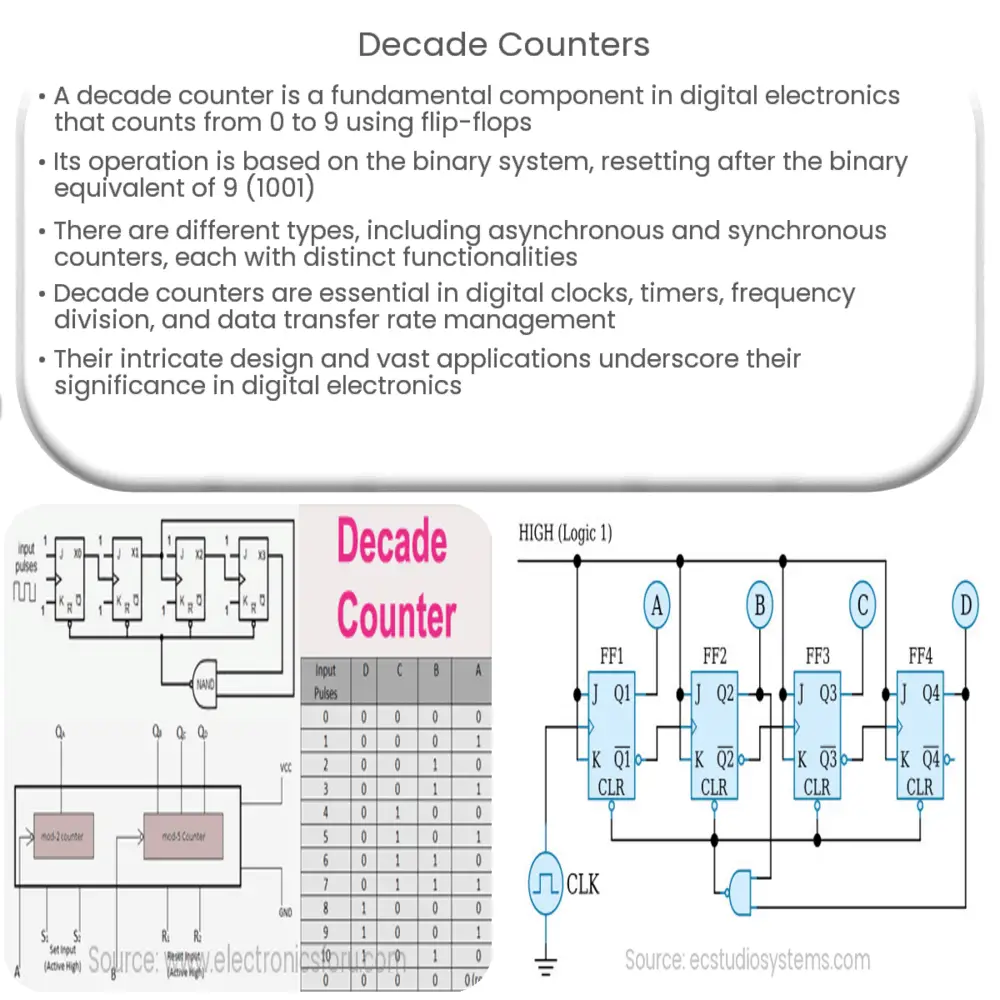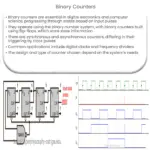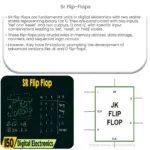Explore the world of digital electronics with our comprehensive guide on decade counters, their working principles, types, and applications.

Introduction to Decade Counters
A decade counter is a critical component in digital electronics, particularly in timing and counting applications. It is a type of counter circuit that counts from 0 to 9, hence the name “decade. It is composed of flip-flops, which are basic storage elements in digital circuits, and is usually configured in a specific sequence to ensure accurate counting.
The Working Principle of Decade Counters
The operation of decade counters revolves around the binary numbering system. To understand this, it’s essential to grasp the basic concept of binary numbers. Binary numbers are a base-2 system, unlike our familiar base-10 system. In binary, a four-bit system can represent numbers from 0 (0000) to 15 (1111).
However, a decade counter, being a ‘decade’ device, needs to count from 0 to 9. So, after reaching the binary equivalent of 9 (1001), the counter resets back to 0. This reset function makes the decade counter stop at ten counts rather than sixteen.
Types of Decade Counters
Decade counters come in various types, each having unique functionalities. Here are some of them:
It’s crucial to understand the strengths and weaknesses of each type of decade counter when choosing the right one for your digital circuit needs.
Applications of Decade Counters
Decade counters have diverse applications across various sectors:
Overall, decade counters are indispensable components in the realm of digital electronics, making our digital devices more precise and reliable.
Understanding the Internal Mechanism of a Decade Counter
Typically, a decade counter is made up of a series of flip-flops, each capable of storing one bit of information – either a 0 or a 1. Flip-flops, also known as bistable multivibrators, can transition between two states based on the input they receive. In the context of a decade counter, the output of one flip-flop often serves as the input to the next, creating a chain reaction that enables the count.
The simplest type of flip-flop used in a decade counter is a D flip-flop. The ‘D’ stands for ‘data’. This flip-flop takes an input and delivers an output that is the same as the input at the next clock cycle. When several D flip-flops are connected in a series, we get a simple counter circuit that increments by one with each clock cycle.
However, to ensure the counter only counts up to 9, additional logic gates are required. These are typically AND gates that detect when the counter reaches the binary equivalent of 10 (1010). When this count is reached, the AND gates output a signal that resets all flip-flops to 0, starting the count again.
Advancements in Decade Counters
Modern decade counters are now more sophisticated. They are often integrated circuits that include the counter logic and flip-flops all on one chip. These devices can typically be cascaded, where the output of one counter triggers the input of the next, allowing for counts beyond a single decade.
Conclusion
In conclusion, decade counters are an integral part of our digital world, playing a crucial role in timing and counting applications. Understanding their working principle, types, and applications can provide valuable insights into the intricate world of digital electronics. Whether it’s the simple ticking of a digital clock, the precise calculation of a scientific instrument, or the efficient operation of a computer system, decade counters are at the heart of these operations, quietly yet efficiently keeping time in the digital age. As technology continues to advance, we can expect these vital components to evolve and adapt, further broadening their potential applications and efficiencies.




